Windows 10 includes the built-in ability to generate a Wi-Fi history report. This report has interesting details about networks that your PC was connected to, along with session duration, the session's start and end, errors and so on. Let's see how to create this report.
Advertisеment
Create a Wi-Fi history report in Windows 10
To create a Wi-Fi history report, do the following.
- Open a new elevated command prompt.
- Type or copy-paste the following command:
netsh wlan show wlanreport
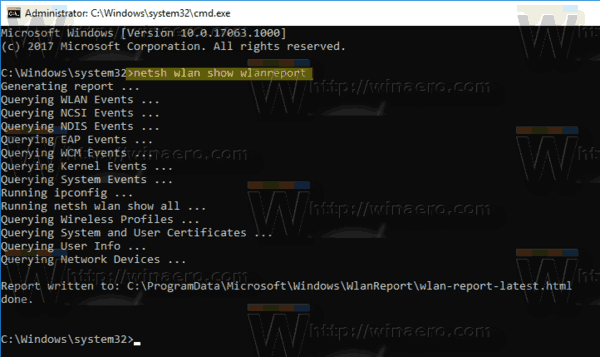
- The report will be saved under the folder
%ProgramData%\Microsoft\Windows\WlanReport. Two files will be created: wlan-report-latest.html and wlan-report-"current timestamp".html.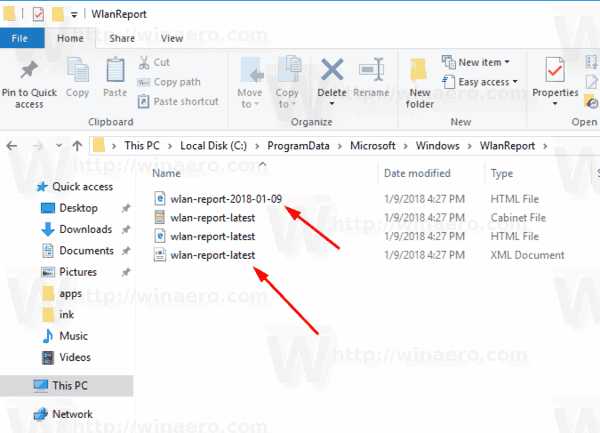
View the Wi-Fi history report
To view the report, do the following.
- Open File Explorer and navigate to the folder
%ProgramData%\Microsoft\Windows\WlanReport. - Open the file "wlan-report-latest.html" to view it with your default web browser, i.e. Edge.
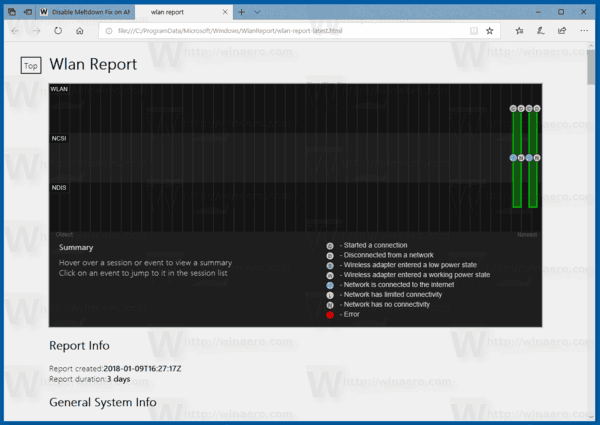
The report includes a number of sections, including System, User, Network Adapters followed by the output of some built-in Windows tools like ipconfig and netsh, etc.
The System section includes some general information about your computer.
The User section contains the current user name and the domain name.
The Network Adapters section lists all the physical and virtual adapters available on the computer.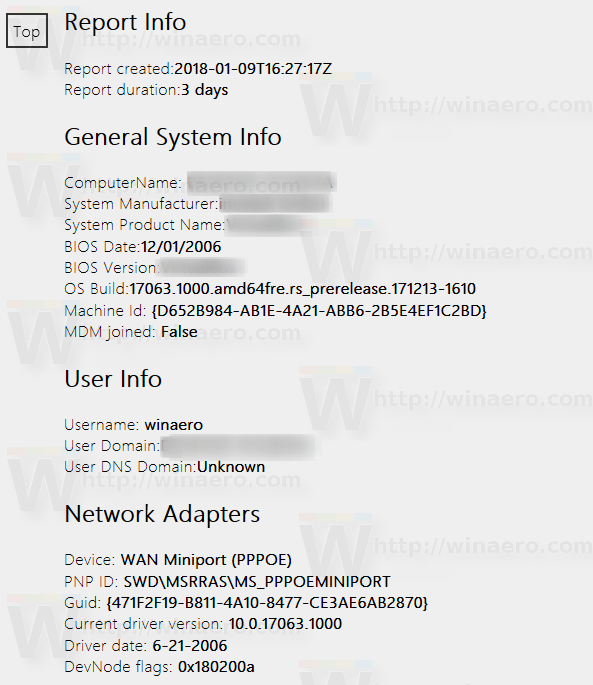
Following the tool output, there is a Summary section which comes with brief session stats, including Wi-Fi disconnection reasons.
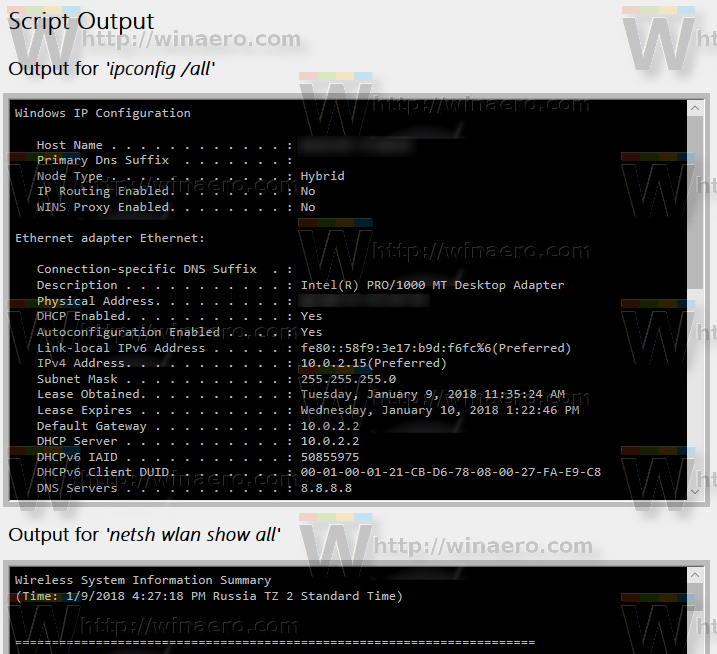
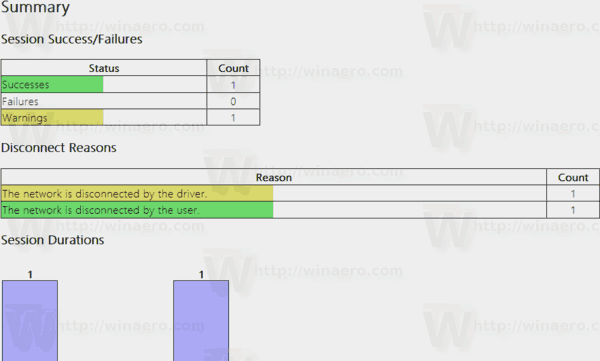
The 'Wireless Sessions' section includes more details about each session.
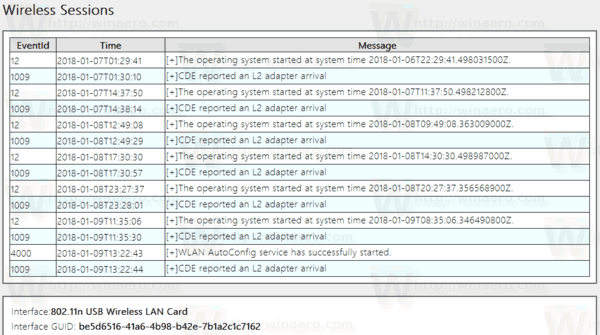
Such a report is very useful when you need to check your wireless network usage in Windows 10 or troubleshoot connection issues.
The report is generated by the built-in netsh tool. It is a console utility which allows changing a lot of network related parameters. Here are just a few examples of what you can do with netsh:
- Check supported WiFi speed of your Wireless adapter in Windows 10
- Backup and restore Wireless network profiles in Windows 10
- Filter wireless networks in Windows 10 to create a black list or white list
- Set up Windows 10 ad hoc wireless hotspot
Besides Wireless network management, netsh allows performing a wide range of maintenance tasks. You can enable or disable Network Discovery, reset a network connection, change your DNS server and more. Netsh is a real Swiss knife when it comes to network administration tasks.
Support us
Winaero greatly relies on your support. You can help the site keep bringing you interesting and useful content and software by using these options:
